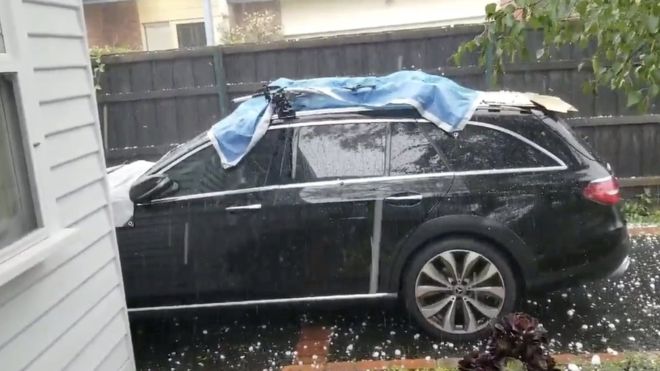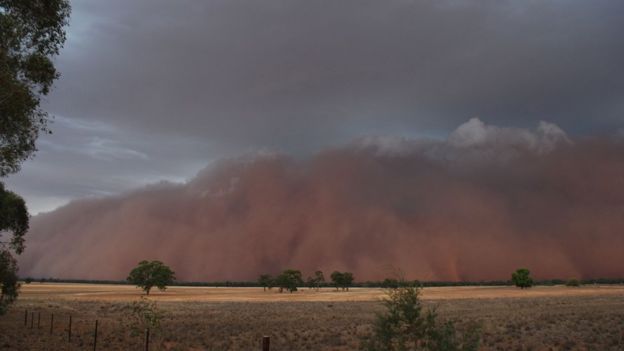
Storms have brought heavy rain to fire-hit regions of eastern Australia but authorities warn the nation’s bushfire crisis is still “far from over”.
More than 80 blazes were still burning across New South Wales (NSW) and Victoria on Monday, despite downpours in recent days.
Melbourne and Canberra have been hit by heavy storms, with residents reporting hail as big as golf balls.
Further storms have also been forecast for bushfire-ravaged states.
Victoria, NSW and Queensland experienced heavy rainfall and floods in recent days, bringing relief to some blaze zones.
But strong winds have also generated dust clouds, temporarily blacking out the sky in NSW towns such as Orange and Dubbo.
Dozens of communities across Australia’s south-east are still reeling from fires which have been described as the most destructive on record.

Since September, blazes have killed at least 30 people, destroyed over 2,000 homes and burnt through 10 million hectares of land – an area almost the size of England.
The crisis has been exacerbated by record temperatures, a severe drought and climate change.
‘Need to remain vigilant’
On Monday, Victoria’s Premier Daniel Andrews said recent rain had proved “very helpful” to bushfire-affected communities.
But he added that storms had also hindered some firefighting efforts and caused a landslide on a highway.
Air quality in the state capital, Melbourne, soared beyond hazardous levels last week due to smoke from nearby bushfires.
“Ultimately, we need to remain vigilant. It’s 20 January – the fire season is far from over,” Mr Andrews told reporters.
Victoria’s worst fire conditions traditionally occur in the first weeks of February.
Mr Andrews said there was still a “massive fire edge” of more than 1.5 million hectares from blazes which had flared up in the state’s east on New Year’s Eve.
Fire officials in NSW have also warned of a return to hot and windy conditions later this week.
Experts estimate that over 1 billion animals have perished in the bushfire disaster. (BBC)





